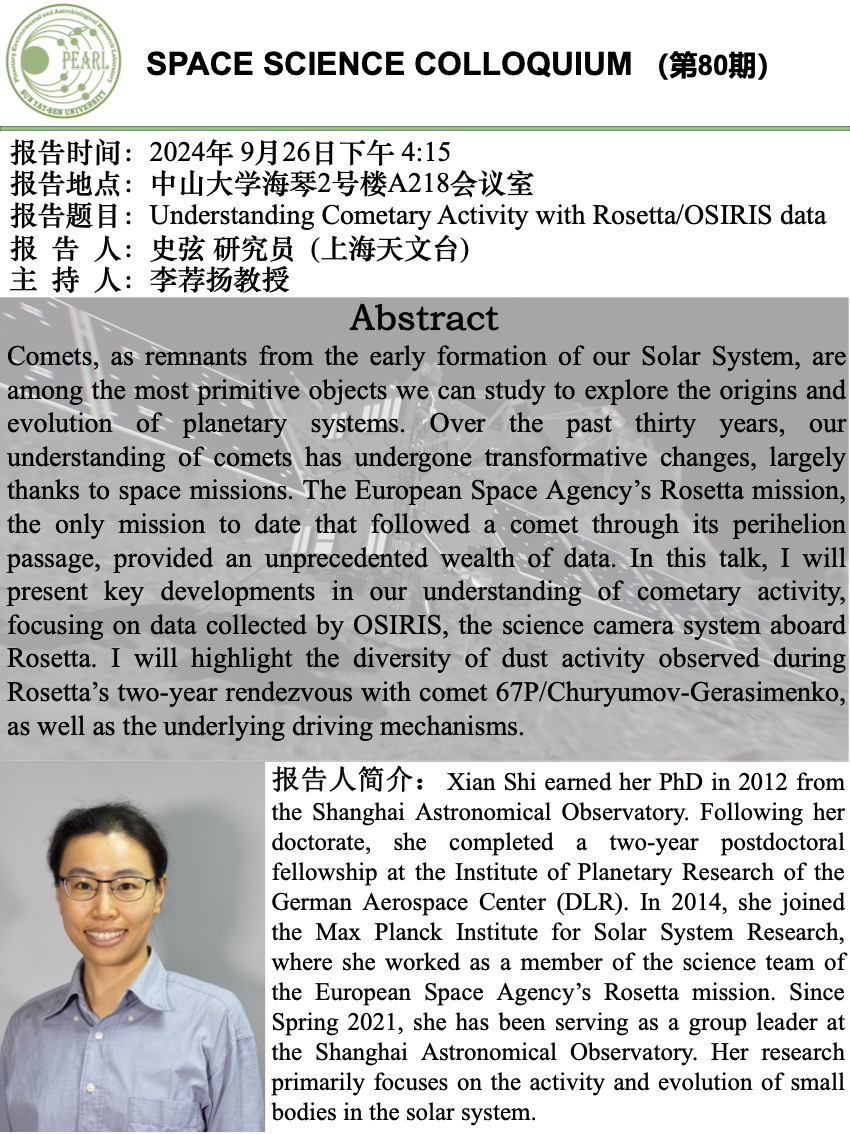Understanding Cometary Activity with Rosetta/OSIRIS data
Understanding Cometary Activity with Rosetta/OSIRIS data
Abstract: Comets, as remnants from the early formation of our Solar System, are among the most primitive objects we can study to explore the origins and evolution of planetary systems.Over the past thirty years, our understanding of comets has undergone transformative changes, largely thanks to space missions. The European Space Agency's Rosetta mission, the only mission to date that followed a comet through its perihelion passage, provided an unprecedented wealth of data. In this talk, I will present key developments in our understanding of cometary activity, focusing on data collected by OSIRIS, the science camera system aboard Rosetta. I will highlight the diversity of dust activity observed during Rosetta's two-year rendezvous with comet 67P/Churyumov-Gerasimenko, as well as the underlying driving mechanisms.
报告人简介:Xian Shi earned her PhD in 2012 from the Shanghai Astronomical Observatory. Following her doctorate, she completed a two-year postdoctoral fellowship at the Institute of Planetary Research of the German Aerospace Center (DLR). In 2014, she joined the Max Planck Institute for Solar System Research where she worked as a member of the science team of the European Space Agency's Rosetta mission. Since Spring 2021, she has been serving as a group leader at the Shanghai Astronomical Observatory. Her research primarily focuses on the activity and evolution of small bodies in the solar system.


